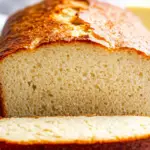In recent years, the ketogenic diet has gained immense popularity as a lifestyle choice for weight loss, improved energy levels, and enhanced mental clarity. Central to this low-carb, high-fat diet is the elimination of traditional bread, which is often laden with carbohydrates. However, giving up bread entirely can be challenging for many people who rely on it as a staple food. Enter keto bread—a delicious, nutritious alternative that allows you to enjoy your favorite sandwiches, toast, and snacks without compromising your dietary goals.
This comprehensive guide will explore everything you need to know about keto bread, including its benefits, ingredients, recipes, and tips for making it at home. Whether you’re new to the keto diet or a seasoned follower looking for ways to expand your culinary repertoire, this article will provide valuable insights into incorporating keto bread into your daily routine.
What Is Keto Bread?
Keto bread is a specially formulated type of bread designed to align with the principles of the ketogenic diet. Unlike traditional bread, which is typically made from wheat flour and contains high amounts of carbohydrates, keto bread uses low-carb flours and other ingredients to mimic the texture and taste of regular bread while keeping carb counts minimal.
The primary goal of keto bread is to provide a satisfying substitute for conventional bread without causing spikes in blood sugar levels or disrupting ketosis—the metabolic state where the body burns fat for fuel instead of glucose. By using alternative flours like almond flour, coconut flour, and psyllium husk, along with healthy fats such as eggs, butter, and avocado oil, keto bread offers a nutrient-dense option that supports a balanced keto lifestyle.
Why Choose Keto Bread?
1. Supports Ketosis
One of the main reasons individuals opt for keto bread is its ability to support ketosis. Traditional bread is packed with refined carbohydrates, which can quickly raise blood sugar levels and kick you out of ketosis. In contrast, keto bread contains significantly fewer carbs, allowing you to maintain stable blood sugar levels and stay in ketosis.
2. Rich in Nutrients
Unlike white or even whole-grain bread, which may lack essential nutrients, keto bread is often fortified with vitamins, minerals, and fiber. Ingredients like almond flour are rich in vitamin E, magnesium, and healthy fats, while flaxseed meal provides omega-3 fatty acids and lignans. These components contribute to overall health and well-being.
3. Versatile and Convenient
Keto bread can be used just like regular bread—whether you’re making sandwiches, burgers, French toast, or simply enjoying a slice with butter. Its versatility makes it an excellent addition to any meal plan, ensuring you don’t feel deprived while following a low-carb diet.
4. Helps Manage Weight
Because keto bread is lower in carbs and higher in protein and fat, it promotes satiety and helps curb cravings. This can lead to reduced calorie intake and better weight management over time.
Key Ingredients in Keto Bread
Creating the perfect loaf of keto bread requires careful selection of ingredients. Here’s a breakdown of the most common components:
1. Almond Flour
Almond flour is one of the most popular choices for keto baking due to its mild flavor, fine texture, and nutritional profile. It’s naturally gluten-free and provides a good source of protein, fiber, and healthy fats.
2. Coconut Flour
Coconut flour is another low-carb flour option known for its absorbent properties. While it has a slightly sweet taste, it must be used sparingly since it absorbs more liquid than other flours. A little goes a long way!
3. Psyllium Husk
Psyllium husk acts as a binding agent in keto bread, helping to create a dough-like consistency without adding extra carbs. It also adds fiber, aiding digestion and promoting gut health.
4. Eggs
Eggs serve multiple purposes in keto bread recipes. They act as a binder, add moisture, and provide structure to the final product. Plus, they’re loaded with protein and healthy fats.
5. Healthy Fats
Ingredients like olive oil, avocado oil, or melted butter not only enhance the flavor of keto bread but also increase its fat content, aligning perfectly with the macronutrient ratios of the ketogenic diet.
6. Baking Powder/Soda
These leavening agents help keto bread rise, giving it a lighter texture similar to traditional bread.
7. Optional Add-Ins
For added flavor and nutrition, consider incorporating seeds (like chia or flax), herbs (such as rosemary or garlic), or cheese into your keto bread recipe.
How to Make Keto Bread at Home
Making keto bread at home is easier than you might think. Below is a simple yet effective recipe to get you started:
Simple Keto Bread Recipe
Ingredients:
- 1 ½ cups almond flour
- ¼ cup coconut flour
- 2 tablespoons psyllium husk powder
- 1 teaspoon baking powder
- ½ teaspoon salt
- 5 large eggs
- 3 tablespoons melted butter or coconut oil
- ½ cup warm water
Instructions:
- Preheat your oven to 350°F (175°C) and grease a standard loaf pan.
- In a mixing bowl, combine the almond flour, coconut flour, psyllium husk powder, baking powder, and salt.
- In a separate bowl, whisk together the eggs, melted butter or oil, and warm water.
- Gradually mix the wet ingredients into the dry ingredients until a thick batter forms.
- Pour the batter into the prepared loaf pan and smooth the top with a spatula.
- Bake for 45–50 minutes, or until a toothpick inserted into the center comes out clean.
- Allow the bread to cool completely before slicing.
This basic recipe yields a dense yet flavorful loaf that pairs beautifully with both savory and sweet toppings. Feel free to experiment with additional flavors or textures by tweaking the ingredients.
Tips for Perfect Keto Bread Every Time
- Measure Accurately : Precision is key when working with low-carb flours. Use a kitchen scale to ensure accurate measurements.
- Don’t Skip the Cooling Step : Allowing the bread to cool completely helps set its structure and prevents crumbling.
- Store Properly : To keep keto bread fresh, store it in an airtight container at room temperature for up to three days or freeze slices for longer storage.
- Experiment with Flavors : Try adding spices, herbs, or grated cheese to customize your bread according to your preferences.
- Use Fresh Ingredients : Stale eggs or expired baking powder can negatively impact the outcome of your bread.
Where to Buy Keto Bread
If baking isn’t your thing, there are plenty of pre-made keto bread options available online and in stores. Brands like Sola Bread, ThinSlim Foods, and Julian Bakery offer tasty, convenient alternatives that cater to various tastes and dietary needs. When purchasing store-bought keto bread, always check the nutrition label to ensure it meets your carb limits.
Potential Challenges and Solutions
While keto bread is a fantastic option for those following a low-carb diet, there are some challenges to be aware of:
Challenge #1: Texture Differences
Keto bread tends to have a denser texture compared to traditional bread. Solution: Experiment with different recipes and techniques to find a formula that works best for you.
Challenge #2: Higher Cost
Low-carb flours and specialty ingredients can be pricier than all-purpose wheat flour. Solution: Buy in bulk and look for sales to reduce costs.
Challenge #3: Limited Availability
Not all grocery stores carry keto-friendly bread. Solution: Consider ordering online or learning to bake your own.
Conclusion
Keto bread is a game-changer for anyone committed to maintaining a ketogenic lifestyle. With its low-carb composition, nutrient-rich ingredients, and versatility, it offers a practical solution for enjoying bread without sacrificing your dietary goals. Whether you choose to bake your own or purchase a ready-made version, keto bread ensures you never have to miss out on the comfort and convenience of this beloved staple.
By understanding the science behind keto bread, mastering the art of baking, and exploring creative ways to incorporate it into your meals, you can fully embrace the benefits of the ketogenic diet without feeling restricted. So why wait? Start experimenting with keto bread today and discover how easy—and delicious—it can be to live a low-carb life!
Print
Keto Bread: The Ultimate Guide to Low-Carb, High-Fat Baking
Ingredients
INGREDIENTS:![]() 1 cup Wholesome Yum Blanched Almond Flour
1 cup Wholesome Yum Blanched Almond Flour![]() 1/4 cup Wholesome Yum Coconut Flour
1/4 cup Wholesome Yum Coconut Flour![]() 2 tsp Baking powder
2 tsp Baking powder![]() 1/4 tsp Sea salt
1/4 tsp Sea salt![]() 1/3 cup Unsalted butter (melted)
1/3 cup Unsalted butter (melted)![]() 12 large Egg whites (~1 1/2 cups, at room temperature)
12 large Egg whites (~1 1/2 cups, at room temperature)![]() 1 tbsp Besti Monk Fruit Allulose Blend (optional)
1 tbsp Besti Monk Fruit Allulose Blend (optional)![]() 1/4 tsp Xanthan gum (optional)
1/4 tsp Xanthan gum (optional)![]() 1/4 tsp Cream of tartar (optional)
1/4 tsp Cream of tartar (optional)
INSTRUCTIONS:
1. Preheat the oven to 325°F (163°C). Line a loaf pan with parchment paper.
2. In a food processor, combine almond flour, coconut flour, baking powder, sweetener, xanthan gum, and sea salt. Pulse until mixed.
3. Add melted butter and pulse until crumbly.
4. In a large bowl, beat egg whites and cream of tartar until stiff peaks form.
5. Fold half of the egg whites into the flour mixture, then gently combine with the remaining egg whites.
6. Transfer the batter to the loaf pan and smooth the top.
7. Bake for 40 minutes, then tent with foil and bake for another 30-45 minutes until firm.
8. Cool completely before slicing.
PREP TIME & NUTRITION:
Prep Time: 10 minutes, Servings: 18, Calories: 90, Net Carbs: 1g, Fats: 7g, Protein: 5g
Instructions
1. Preheat the oven to 325°F (163°C). Line a loaf pan with parchment paper.
2. In a food processor, combine almond flour, coconut flour, baking powder, sweetener, xanthan gum, and sea salt. Pulse until mixed.
3. Add melted butter and pulse until crumbly.
4. In a large bowl, beat egg whites and cream of tartar until stiff peaks form.
5. Fold half of the egg whites into the flour mixture, then gently combine with the remaining egg whites.
6. Transfer the batter to the loaf pan and smooth the top.
7. Bake for 40 minutes, then tent with foil and bake for another 30-45 minutes until firm.
8. Cool completely before slicing.
PREP TIME & NUTRITION:
Prep Time: 10 minutes, Servings: 18, Calories: 90, Net Carbs: 1g, Fats: 7g, Protein: 5g
